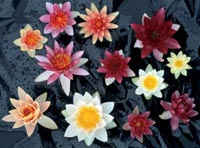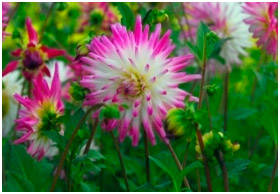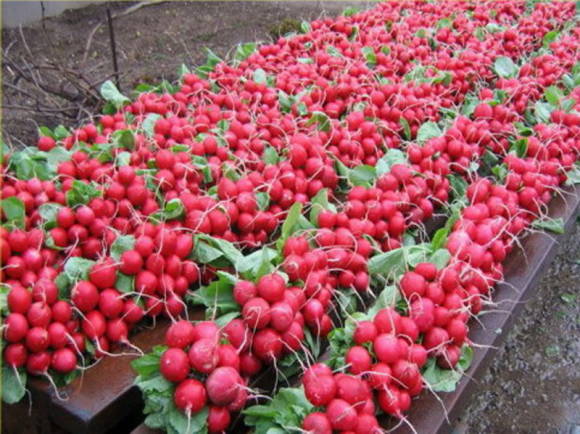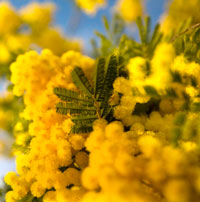Few Russian visitors to the Chelsey Flowers Show know that nearby, just a 15-minute walk from the exhibition, there is the oldest English botanical garden - Chelsea Physic Garden. And it is worth visiting not only because of its venerable history, but also as a unique living museum and landscape example of a pharmaceutical garden with the richest collections. It was founded in 1873 by the Society of Pharmacists of London for the introduction and study of medicinal plants, as well as the training of apprentice pharmacists. For England at that time, a garden not attached to a university was unusual. And the word "physic" then meant "natural" as opposed to everything metaphysical. The modern Oxford Dictionary defines this word as "medicine" and also as "the art of healing."
 |  |
Initially, it was allocated 4 acres (1.6 hectares) of land on the banks of the Thames, now the area of the garden is 3.8 acres (1.54 hectares). These places were then already known for their gardens and vegetable gardens, there were several large houses of King Henry VIII. Pharmacists chose this place also because their arrogantly painted barge moored here, which was used for royal holidays and expeditions to collect plants for herbaria. This place was also distinguished by a special microclimate, which made it possible to preserve to this day, for example, the oldest olive tree in Great Britain, growing in open ground.
 |  |
In the first decade of the garden's existence, there was an active search for a gardener who could manage the garden. Finally, the pharmacist John Watson was assigned to them. He made contact with Leiden University botany professor Paul Hermann to exchange plants and seeds and soon received four Lebanese cedar seedlings from him, which became some of the first cultivated specimens in the country. These cedars have not survived to this day, but they are captured in many old engravings. One of the cedars survived until 1903, and its offspring can still be seen in Cambridge. Until now, the garden publishes an annual Index Seminum for the exchange of seeds with other botanical gardens. And its greenhouses, which store collections of useful heat-loving plants, are considered the oldest in Europe.

In 1712 the estate was bought by Dr. Hans Sloan (1660-1753). In 1716 he was knighted and soon became president of the Royal Horticultural Society and the Royal College of Physicians. For a conditional price of 5 pounds, he leased this territory to pharmacists on the condition that the garden would retain its purpose. He laid the foundation for the future of the garden, demanding that fifty specimens of new plants be brought to the Royal Society every year. So, since 1795, the collection was replenished with 2000 samples and reached 3700.
 |  |
Sloane passed away at the age of 93, and his collections and library formed the basis of the British Museum and then the Natural History Museum. The £ 5 rent is still paid to his heirs. Sloane's other notable contribution was the appointment of Philip Miller (1691-1771) as Chief Gardener, who dedicated 50 years of his life to the garden and made it world famous. He was subsequently succeeded by William Forsyth, after whom Forsythia is named.
 |  |
Miller carried on an active exchange of seeds and plants with renowned botanists. He became the author of eight editions of the Gardener's Handbook, which became the main guide to plant cultivation not only in Great Britain, but also in America, and were translated into Dutch, German, French. From here, cotton was brought to a new colony in the American state of Georgia for cultivation. Miller also provided madder, which was grown to produce red paint.
 |  |
Many plants were first described by Miller. In 1730, Karl Linnaeus visited the garden several times, who left the name of Miller behind these plants. Now there is Miller's Garden with plants introduced by him.
 |  |
In 1732, Sloane laid the foundation stone for a magnificent conservatory where Miller lived with his family for a time.This building has not survived, it was demolished in the middle of the 19th century, when the time of some decline came here. In 1899, the garden was taken over by the City Parochial Foundation, but it was still used as a teaching base for students. In 1983, the foundation decided that it could no longer support the garden, and for the first time in its 300-year history, it was opened to the public.

The northern part of the garden is occupied by administrative buildings, lecture halls, a cafe and a souvenir shop, a "tropical corridor" of greenhouses. In the greenhouse opposite, thermophilic medicinal exotics are also grown in pots.
 |  |
 |  |
The Mediterranean greenhouse contains plants from the Greek island of Crete, some of which are endemic to this island and are now very rare in nature. A lot of plants from the Canary Islands - rare lavenders (Lavandula minutolii var. minutolii, Lavandula pinnata), monantes multifoliate (Monanthes polyphylla), Webb's bruise (Echium webbii), prickly bruise (Еchium acanthocarpum), sideritis drooping (Sideritis nutans), aeonium canary (Aeonium canariensis), canary sage (Salvia canariensis) and Brussonet's sage (Salvia broussonetii)... Interesting plants - laurel azores (Laurus azorica) from the Azores, hairy husk (Ballota hirsuta) from Spain, Chistets (Stachys spreitzenhoferi) from Greece.
 |  |
 |  |
Further, the garden is divided into squares by gravel paths, in the center of the garden, in a place of honor, stands the monument to Hans Sloan, erected in 1733. But this is a copy - the original, badly damaged by time, is in the British Museum. Off to the side of the monument are two carts, one of which appeared here in honor of the 250th anniversary of Sloane's death, and the other to commemorate the 300th anniversary of K. Linnaeus in 2007.
 |  |
There is a small rocky garden next to the monument, which is nevertheless very famous in the world. It is based on fragments of stone that were once part of the Tower of London and basalt lava used as ballast on the ship of Sir Joseph Banks on his 1772 voyage to Iceland. Behind the rocky garden is a small but very beautiful pond.

The garden features avenues of Sir Joseph Banks and other famous English botanists - William Hudson, William Curtis, John Lindley and Robert Fortune - with plants associated with their names and benches that allow you to enjoy wonderful views.
 |  |
Medicinal plants are placed mainly in the beds - this is a feature of the garden design. They are not subject to any taxonomy. But this is truly the world's treasury. In addition to medicinal plants, food and fruit plants were collected, as well as those in demand by the perfumery and cosmetic industry, used for the production and dyeing of fabrics. Rare species of lichens and insects were found on the territory of the garden. Many frogs and newts live in the pond.
 |  |
The garden is primarily intended to showcase the variety of useful plants and their origins. Scientific work is still underway - for example, the study of ferns of the genus Asplenium.
 |  |
A separate greenhouse is set aside for ferns; it bears the name of the botanist and gardener Thomas Moore (1821-1887), who described many species of fern and seed plants. At the entrance to it there is a beautiful specimen of a tree fern. Among the rich collection of ferns, other rare plants are also planted - recumbent fuchsia (Fucsia procumbens), ginseng (Ranax ginseng), Chlorant Fortune (Chloranthus fortunei).
 |  |

The end of May is a great time to visit the garden. Rare peonies bloom - for example, the herbaceous peony Kambesseda (Paeoniacambessedessii), Potanin's tree peony (Paeonia potaninii var. potaninii), over the medicinal beds are the pink branches of a blooming Judah tree (Cercis siliquastrum) and an unusually lush tamarisk four-chink (Tamarix tetrandra)... There are many delicate tulips in the garden and containers.
 |  |

Among the plants in the open field there are various mint and rhubarb, rare multiflorous podophyll (Podophyllum pleianthum), mandrake (Mandragora officinarum), Fortune's stethoscope (Eupatorium fortunei), cyanosis creeping (Polemonium reptans), thousand-headed Spanish (Vaccaria hispanica), sweet butterbur (Petasites fargrans), sarcococcus acupuncture (Sarcococca ruscifolia var. chinensis), styloforum rough-fruited (Stylophorum lasiocarpum), tetrapanax paper, or Chinese paper tree (Tetrapanax papyrifera).
 |  |
 |  |
 |  |
Plant lovers will get here not only new knowledge, but also a real pleasure from a walk in the garden. Despite the small area, it is better to plan at least half a day for this. Visitors to the Chelsea Flower Show will not have enough time before the garden closes.







